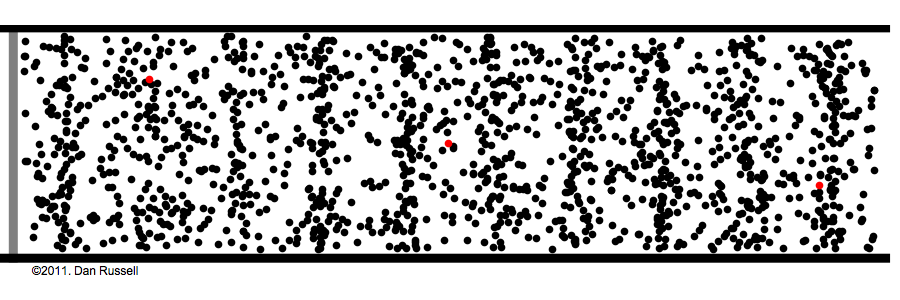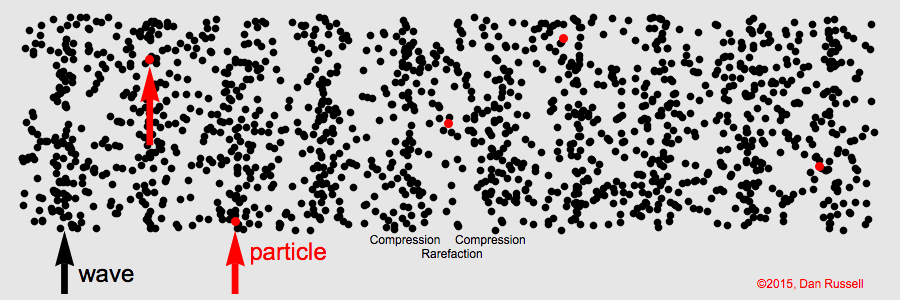Previously, we looked at transverse waves. In contrast, some waves (such as sound waves in air) are longitudinal. In a longitudinal wave the particles vibrate parallel to the direction the wave is travelling in (not at 90 degrees as for waves on a string).
Longitudinal wave on a slinky spring
What is being carried by the wave comes down to the question ‘how close together are the coils of the spring?’. At rest, the coils are a certain distance apart, and when the end of the slinky is shaken (along its length) then a compressed region travels along the length.
(c) Acoustics, University of Salford
The wave loses power as it travels from left to right, partly because the strings we suspended the slinky from absorb some of the wave energy. However, you should still be able to see the wave reach the end of the spring, and if you look carefully you’ll notice a small reflection where the wave bounces from the end and starts to travel from right to left. If you’re really patient and continue to watch, you’ll see that after some time things get quite complicated, and that different parts of the spring appear to be stretched (science-speak: rarefied) or compressed at different points in time.
The animation below shows a particle model of a longitudinal wave. It could for instance, represent a bunch of air molecules in the presence of a sound wave. The air molecules vibrate in the direction of wave travel and form a series of compressions (high pressure) and rarefactions (low pressure), where the molecules are squashed together and pulled apart respectively. If you pick on a particle, such as the one highlighted in red, you’ll notice it moves back and forth to pass on the wave, but doesn’t stray much from the equilibrium position.


Animations: Daniel A. Russell, The Pennsylvania State University
Sticking with the sound wave example, we might be interested in how loud such a wave is. Loudness has to do with amplitude or intensity. This is related to how compressed and how rarefied the air molecules are. This is often measured using the decibel scale.
Career case study: types of waves
Have you ever been annoyed by the sound of a neighbour? Or a member of your own family in another room!? To design better walls that resist sound, you need to know the types of waves involved. A type called bending waves is particularly important in this case. Read about Wenda Nuridahissan’s work making new building acoustic products.